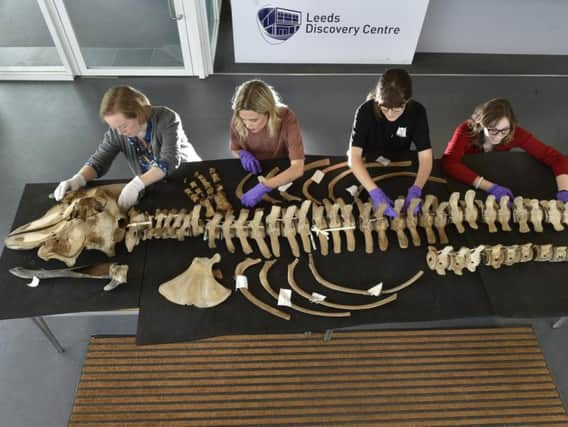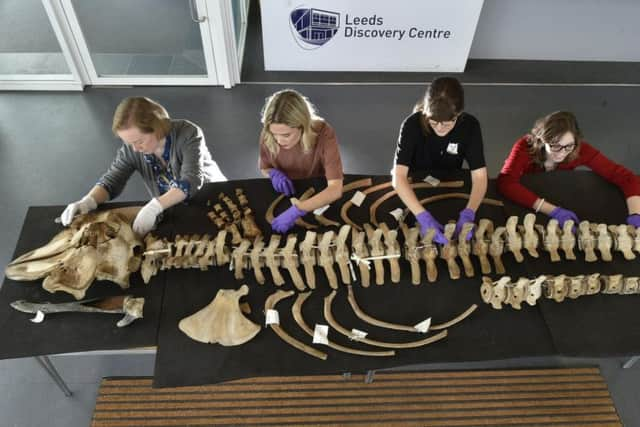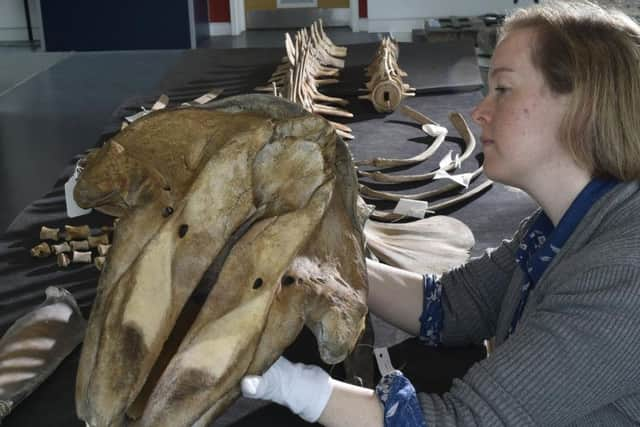Pilot project will piece together Leeds whale’s tragic tale


Leeds Museums and Galleries’ long-finned pilot whale is being painstakingly pieced together over the next few months, before it is hung from the ceiling of Leeds City Museum later this year.
Currently in storage at the Leeds Discovery Centre, the ill-fated marine mammal was collected back in 1867 off the coast of Scotland when a group of fishermen spotted a pod of whales near Leith.
Advertisement
Hide AdAdvertisement
Hide AdDeliberating stranding the animals, they killed the entire group for meat and blubber.


The whale has been in pieces in the museum store but with the help of funding from the Leeds Philosophical and Literary Society, the Friends of Leeds City Museums and the National Lottery Heritage Fund it will now be cleaned, conserved and articulated before being displayed to the public in the autumn.
Clare Brown, Leeds Museums and Galleries’ curator of natural sciences, said she hoped the display would not only show how much still needs to be done to protect other vulnerable species.
She said: "This whale met a very tragic and gruesome end which was not unusual in 1867. In the 150 years that has followed, global conservation efforts have seen a huge shift in the way whales are seen and thankfully, we are now predominantly focussed on protecting and preserving these magnificent creatures.
Advertisement
Hide AdAdvertisement
Hide Ad"Our hope is that by displaying this inspirational animal in Leeds and telling its story, we can encourage thousands of visitors to think about the environment in a different way and look at the many small steps they can take to help safeguard our seas."


Once on display, the Leeds whale will be a permanent exhibit and will be used to kick-start a programme of workshops, discussions and talks by experts on whales and the sea.
The museum’s collection staff will also be running events on object conservation and whale anatomy, before the animal goes on display.
FACTFILE
Found in the North Atlantic and Southern Hemisphere, long-finned pilot whales are named for their unusually long pectoral fins and the once prominent belief that groups had a leader, or "pilot".
Advertisement
Hide AdAdvertisement
Hide AdReaching more than 6.5 metres in length and weighing more than five tonnes, they live in large groups of up to 150 and feed mostly on fish, communicating while they hunt with a series of characteristic clicks, whistles and buzzes.
Historically a target for the whaling industry, tens of thousands of long-finned pilot whales were captured and killed in the 1940s and 50s. Today, the Faroe Islands are home to the only remaining large scale long-finned pilot whale hunts in the world.